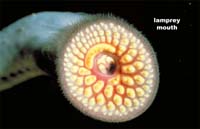Scientists from South Africa discover world's oldest fish fossil
Scientists from the University of the Witwatersrand and the University of Chicago have discovered a 360 million-year-old lamprey.

The discovery was made at Witteberg Group rocks near Grahamstown, in the Eastern Cape.
According to the scientists, this demonstrated that modern lampreys are remarkable living fossils.
The report is published in Nature today.
This jawless fish fossil was discovered by Robert Gess, a PhD student at the Bernard Price Institute for Palaeontological Research at Wits, under the supervision of Professor Bruce Rubidge of Wits and Dr Mike Coates of the University of Chicago.
Scientists from around the world are currently engaged in reconstructing the evolutionary tree of life, combining data from the structure of living organisms, the fossil record and the analysis of DNA, reports AllAfrica.
According to Spotlighting News, the lamprey and the hagfish appear to be the only survivors of what is believed to be the first family of vertebrates, which according to some paleontology experts developed into jawed, bony fish.
The jawed fish, most likely descending from the jawless lamprey and other fish-like creatures of that time, appeared half a billion years ago, taking another evolutionary path.
Current lampreys have big eyes, a nostril, and a total of 14 gills. Their first 5-7 years are spent in the form of burrowing freshwater larvae, then metamorphose into predatory/parasitic creatures which cling onto fish with their mouths, and feed on its blood and tissues.
Lampreys reproduce in fresh water by creating a nest, then spawn and die.
When the fossilized lamprey lived, there were probably many types of jawless vertebrates. Except for the lamprey and hagfish, all of them seem to have died out.
"This fossil shows that the lampreys are the closest living representatives of backboned animals of that era,'' Coates said, reports National Geographic.
Subscribe to Pravda.Ru Telegram channel, Facebook, RSS!



